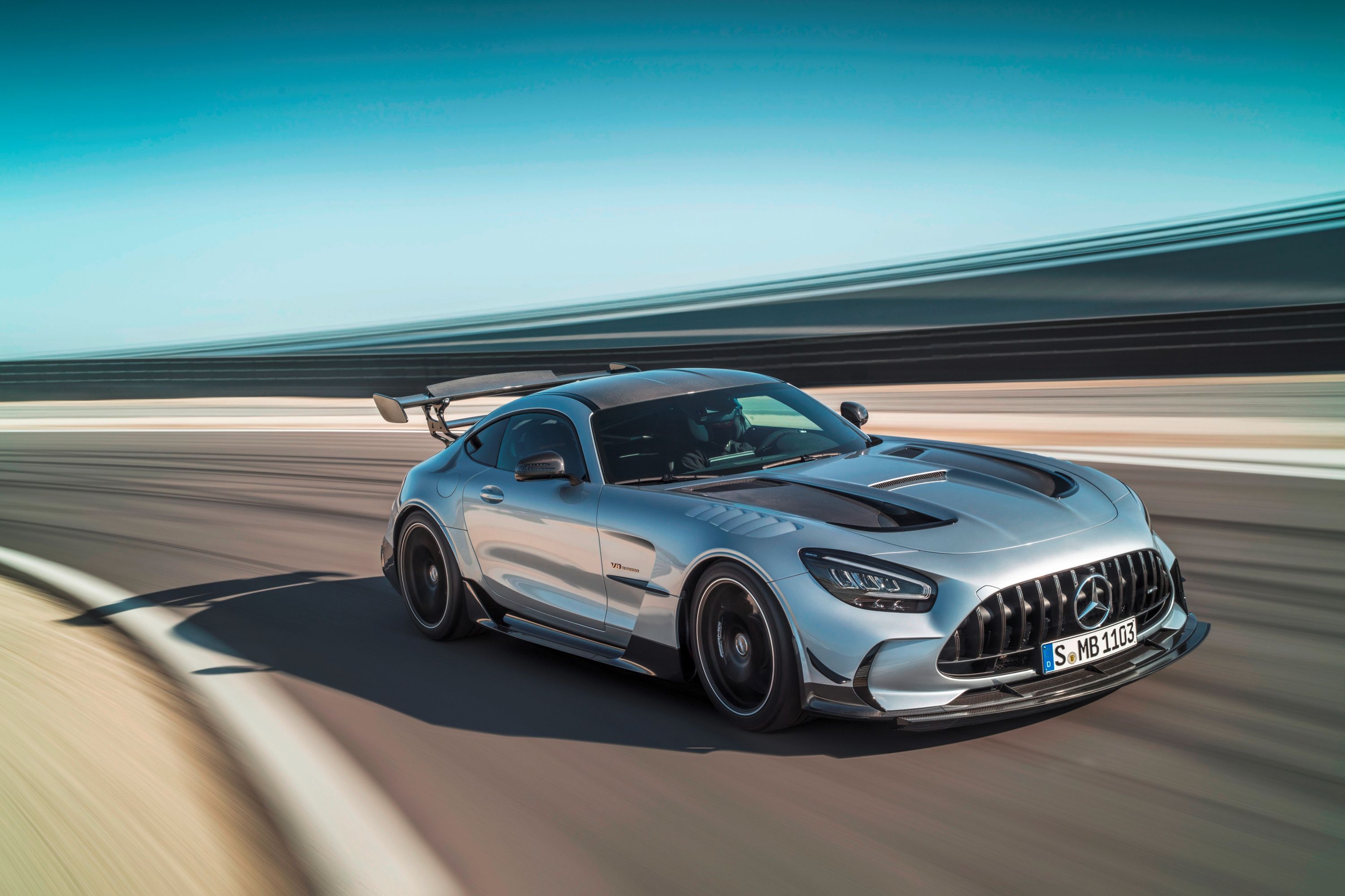
The start of the 2022 FIA Formula 1 season is just a couple of weeks away, and already there's been drama. Russia's only driver, Nikita Mazepin, has just been given his marching orders, with this following from the obvious cancellation of the planned Sochi race in his home country. But in more positive developments, Aston Martin recently revealed its returning safety and medical cars for the new season, and now Mercedes-AMG has shown its contribution to safety in the sport with the reveal of its new deployments.
For the first time, the Mercedes-AMG GT Black Series is acting as a safety car while the Mercedes-AMG GT 63 S makes its debut as an official medical car.
Since 2000, Bernd Maylander has been the helmsman of the safety car and says that he's "especially pleased that this year, it's a Mercedes-AMG GT Black Series," remarking that he's tested the standard car in the past and been "blown away by how close it is to a thoroughbred race car" and that this is a "major step" up from last year's GT R.
Both cars are essentially standard, but they have gained additional equipment, naturally. For the safety car, things have been done differently, with this year's car deleting the roof light bar and rather integrating warning LEDs into the upper windscreen and rear wing. This. Looks. Fantastic!
In addition, two tiny video cameras are fitted to the spoiler strut on the right-hand side, with one set of images being displayed in the car as a digital rearview mirror in a small monitor to the right of the regular mirror and the other set transmitting a live TV stream. A light module also illuminates the SC lettering on the sides when the car is in action.
The only new features over the stock, 720-horsepower car (which already comes with a lightweight roll cage if you spec the Track Package) are the addition of six-point safety harnesses and two tablets in the center console and in front of the passenger seat. These enable co-driver Richard Darker to monitor the field and thus help Maylander prefer for traffic ahead on the track. Other buttons have been added for various radio functions, and a second radio system exists as a backup.
Mercedes didn't stop there though. The carmaker says that "in the event of an accident on the track that exceeds a critical g-force threshold, the LEDs [of the "medical warning light"] flash several times. This provides Bernd Maylander and Richard Darker with an additional warning to prepare for action."
The medical car is the 630-hp AMG GT 63 S four-door coupe that replaces the outgoing C63 S. With all-wheel drive, this will be a much safer and quicker-to-respond medical vehicle, especially in the wet. This is now the fastest and most powerful medical car in F1 history, but it still got some added touches. A carbon fiber scoop has been added to the roof that also acts as the mounting point for the conventional light bar. Obviously, this was extensively tested in a wind tunnel to ensure that it and the rear wing provide the most downforce possible.
Occupants are held in place by four individual racing buckets with six-point harnesses in front and four-point harnesses in the rear. These seats' consoles are welded to the floor for maximum safety.
As you'd expect, this car also has high-tech radio equipment, but it gains more than the safety car in terms of screens, with three tablets plus an electronic rearview mirror on the passenger-side dashboard. Thanks to an in-car hotspot, medical teams can monitor drivers' health:
"All Formula 1 racing drivers wear special gloves equipped with sensors in the pinkie finger to monitor their vital signs. In an emergency, the paramedics in the medical car can receive information in real time on one of the screens telling them the current pulse rate or blood-oxygen level of the casualty. This enables them to coordinate effective and targeted first-response measures." That's just brilliant.
As before, both cars are finished in red to better distinguish them from their Aston Martin partners in green. We'll get to see the cars in action throughout the 2022 season that commences on March 18 in Bahrain.
